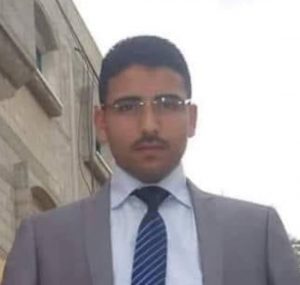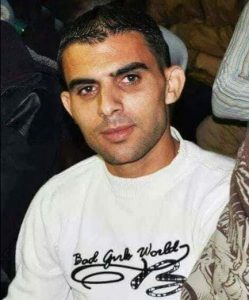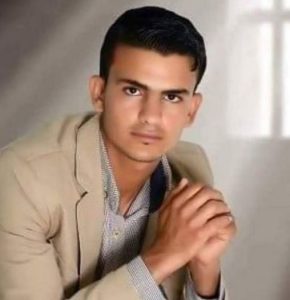20 july 2018

As night fell on Friday evening, after Israeli airstrikes killed Palestinian fighters that afternoon, and one Israeli soldier stationed at the border was reportedly killed, reports began coming in on Twitter from different parts of Gaza showing Israeli fighter jets dropping bombs. video
The Israeli army said one of its soldier was seriously injured by Hamas fighters near the southern part of the Gaza Strip, during what it called a military activity near the border fence, in southern Gaza, and later died from his wounds.
The name is of soldier has not been released at the time of this report.
The extent of the damage is unknown as of yet, and the airstrikes appear to be ongoing. As the loudspeakers sounded the call to evening prayer from mosques across the Occupied Territory, the sound of Israeli fighter jets filled the sky, and bombs began to fall.
The Israeli army said it targeted and destroyed 25 sites, run by armed resistance groups in Gaza, including monitoring and training centers.
The bombing came just hours after Israeli Defense Minister Avigdor Lieberman stated that he was planning to launch a large-scale war in Gaza similar to the one in 2014, in which 2200 people were killed. In his statement, he said the ‘Palestinian people will pay the price’ for the continued non-violent protests at the border, which have been going on for 100 days.
One woman in Khan Younis filmed a bombing on her phone, and posted it on Twitter with the caption, “I have heard twenty bombs in the last 30 minutes”. Several people live streamed on Facebook from different parts of Gaza, as the bombs began to drop.
The Israeli strikes were carried out in several parts of the Gaza Strip, including sites run by the al-Qassam Brigades, the armed of Hamas, in Rafah and Khan Younis, in addition to missiles fired into the Zeitoun neighborhoods, east of Gaza city, causing several injuries.
The soldiers also fired at least eleven missiles into two sites, west of Khan Younis, causing serious damage.
The Israeli army claims it “was retaliating to shells fired against its soldiers near Gaza’s eastern border area, while Hamas said it was retaliating to the killing of four Palestinians by army missiles, Friday.
It said that Palestinian fighters fired shells into areas in Shaar HaNegev and Sdot Negev Regional Councils of Settlements, and added that the Iron Dome missile defense system managed to intercept two.
It stated that one shells landed and detonated in an open area in Shaar HaNegev. The reported shells did not lead to any casualties.
The sirens were heard amid an escalation along the Gaza border with Israel.
Fawzi Barhoum, the spokesperson of Hamas in Gaza, said that Israel has chosen the path of war and offensive on Gaza and its people, by murdering unarmed protesters, and added that these killings have raised the bar of retaliation.
“Israel will be held accountable for its crimes; our resistance has the moral and legal duties to protect its people, despite the dire consequences of its retaliation,” Barhoum said, “Shelling will be met my shelling – the resistance is ready, and capable of retaliation and of fighting for the liberation of its people, for breaking the siege and continuing the struggle for independence.”
Furthermore, Israeli navy ships fired many live rounds at Palestinian fishing boats, near Gaza city, wounding one fisherman, and causing damage to several boats. The soldiers also sprayed many boats with waste-water mixed with chemicals.
The Israeli army said one of its soldier was seriously injured by Hamas fighters near the southern part of the Gaza Strip, during what it called a military activity near the border fence, in southern Gaza, and later died from his wounds.
The name is of soldier has not been released at the time of this report.
The extent of the damage is unknown as of yet, and the airstrikes appear to be ongoing. As the loudspeakers sounded the call to evening prayer from mosques across the Occupied Territory, the sound of Israeli fighter jets filled the sky, and bombs began to fall.
The Israeli army said it targeted and destroyed 25 sites, run by armed resistance groups in Gaza, including monitoring and training centers.
The bombing came just hours after Israeli Defense Minister Avigdor Lieberman stated that he was planning to launch a large-scale war in Gaza similar to the one in 2014, in which 2200 people were killed. In his statement, he said the ‘Palestinian people will pay the price’ for the continued non-violent protests at the border, which have been going on for 100 days.
One woman in Khan Younis filmed a bombing on her phone, and posted it on Twitter with the caption, “I have heard twenty bombs in the last 30 minutes”. Several people live streamed on Facebook from different parts of Gaza, as the bombs began to drop.
The Israeli strikes were carried out in several parts of the Gaza Strip, including sites run by the al-Qassam Brigades, the armed of Hamas, in Rafah and Khan Younis, in addition to missiles fired into the Zeitoun neighborhoods, east of Gaza city, causing several injuries.
The soldiers also fired at least eleven missiles into two sites, west of Khan Younis, causing serious damage.
The Israeli army claims it “was retaliating to shells fired against its soldiers near Gaza’s eastern border area, while Hamas said it was retaliating to the killing of four Palestinians by army missiles, Friday.
It said that Palestinian fighters fired shells into areas in Shaar HaNegev and Sdot Negev Regional Councils of Settlements, and added that the Iron Dome missile defense system managed to intercept two.
It stated that one shells landed and detonated in an open area in Shaar HaNegev. The reported shells did not lead to any casualties.
The sirens were heard amid an escalation along the Gaza border with Israel.
Fawzi Barhoum, the spokesperson of Hamas in Gaza, said that Israel has chosen the path of war and offensive on Gaza and its people, by murdering unarmed protesters, and added that these killings have raised the bar of retaliation.
“Israel will be held accountable for its crimes; our resistance has the moral and legal duties to protect its people, despite the dire consequences of its retaliation,” Barhoum said, “Shelling will be met my shelling – the resistance is ready, and capable of retaliation and of fighting for the liberation of its people, for breaking the siege and continuing the struggle for independence.”
Furthermore, Israeli navy ships fired many live rounds at Palestinian fishing boats, near Gaza city, wounding one fisherman, and causing damage to several boats. The soldiers also sprayed many boats with waste-water mixed with chemicals.
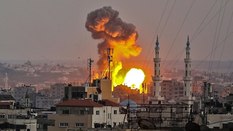
After Palestinians open fire at IDF troops on Gaza border, killing one soldier, Israeli tanks and aircraft retaliate with strikes on terror targets across the strip; political and security brass hold emergency situation evaluation in Kirya Headquarters in Tel Aviv; 3 rockets fired from Gaza, Iron Dome intercepts 2.
An IDF soldier was killed near Kissufim by sniper fire from the Gaza Strip on Friday afternoon, leading for a retaliatory strike by the IDF that killed at least four Hamas fighters.
The IDF attacked terror targets across the Gaza Strip with both tank and aircraft fire. So far, 15 targets were bombed at the Hamas Zaytun battalion headquarters. The headquarters were destroyed, while arms depots, training facilities, observation posts, the battalion situation room, the battalion commander's office and other infrastructures were hit.
At least four Palestinians from Hamas's military wing, the Izz ad-Din al-Qassam Brigade, were reportedly killed in the IDF retaliatory action. At least 120 Palestinians were reported wounded.
At around 8:30pm, a Code Red rocket alert siren was sounded in Shaar HaNegev Regional Council and Sdot Negev Regional Council. Three rockets were fired from the Gaza Strip, with two of them intercepted by the Iron Dome missile defense system and the third fell in open area.
Several explosive devices were thrown at IDF force from the Gaza Strip following the fire exchange. None of the soldiers were hurt.
An IDF official described the fire exchange as the gravest incident since the 2014 Operation Protective Edge, putting the blame squarely on Hamas.
"Hamas will be held accountable for this incident as well as the series of the terror activities it has been executing over the past months," the IDF said in a statement. "Hamas has chosen to escalate the security situation and will bear the responsibility for its actions."
In the wake of the incident, the political and security brass, headed by Prime Minister Benjamin Netanyahu, Defense Minister Avigdor Lieberman and IDF Chief of Staff Lt. Gen. Gadi Eisenkot, convened in the Kirya Headquarters in Tel Aviv for a situation assessment on Friday evening.
The IDF's Home Front Command instructed Israelis living in communities near the Gaza border to remain within a 15 second distance from a bomb shelter or a safe room as well as to avoid mass gatherings. The army also closed the Zikim beach for the weekend as a precaution.
Hamas leader Ismail Haniyeh arrived to the area shortly before the incident.
Hamas said that "The mass participation in the 'March of Return' campaign and the lifting of the Gaza siege, alongside the steadfast persistence of the Palestinian public despite the attacks, terror and the occupation's escalation, is the proof that the Palestinian people are not breaking and are insisting on their rights and on lifting the siege, no matter what the death toll may be."
Khalil al-Hayya, a top Hamas leader, said "the protests will remain, flaming and existing, and its tools will multiply and diversify, including kites, until our goals are achieved."
For the first time, an incendiary balloon of the kind used in Gaza was found in the garden of southeast Jerusalem home close to the Palestinian town of Beit Jala. Police sappers dealt with the device.
The weekly protests led by Gaza's Hamas rulers against Israel are meant in part to draw attention to the Israeli-Egyptian blockade imposed after the terror organization assumed control of Gaza in 2007.
Lieberman: Hamas leaving us no choice but to launch wide offensive
Defense Minister Avigdor Lieberman warned Friday morning that the Hamas terror group is leaving Israel with no choice but to launch a “wide scale and painful military campaign,” as incendiary kites and balloons continue to fall from Gaza on Israeli border communities.
“We are making efforts to weigh matters and be responsible, but the heads of Hamas are forcefully leading us to a situation in which we have no choice, to a situation in which we will have to embark on a wide scale and painful military operation that is not intended for show—a wide scale and painful military operation,” he emphatically repeat
Lieberman’s comments come against a backdrop of American efforts to kick-start international aid initiatives to alleviate the economic paralysis gripping the Gaza Strip on condition that Hamas renounce terror.
"We really are conducting ourselves responsibly and with restraint, even though the real problem with that is the erosion of deterrence, a change in the equation and, of course, the feeling of security which is no less important than security itself and having to come to terms with a reality in which at the end of last week the residents in the Gaza region were forced to run 20 times to bomb shelters," Lieberman explained.
Last week an IDF major was moderately wounded from a grenade thrown at him by Palestinian rioters on the Gaza border on Friday, while a Palestinian teen was killed by IDF fire east of Gaza City.
In response, the force opened fire towards the terrorists who threw the grenade in northern Gaza—in the area between Gaza City's Saja’iyya neighborhood and the old Karni crossing near Kibbutz Nahal Oz—and a hit was identified.
An IDF soldier was killed near Kissufim by sniper fire from the Gaza Strip on Friday afternoon, leading for a retaliatory strike by the IDF that killed at least four Hamas fighters.
The IDF attacked terror targets across the Gaza Strip with both tank and aircraft fire. So far, 15 targets were bombed at the Hamas Zaytun battalion headquarters. The headquarters were destroyed, while arms depots, training facilities, observation posts, the battalion situation room, the battalion commander's office and other infrastructures were hit.
At least four Palestinians from Hamas's military wing, the Izz ad-Din al-Qassam Brigade, were reportedly killed in the IDF retaliatory action. At least 120 Palestinians were reported wounded.
At around 8:30pm, a Code Red rocket alert siren was sounded in Shaar HaNegev Regional Council and Sdot Negev Regional Council. Three rockets were fired from the Gaza Strip, with two of them intercepted by the Iron Dome missile defense system and the third fell in open area.
Several explosive devices were thrown at IDF force from the Gaza Strip following the fire exchange. None of the soldiers were hurt.
An IDF official described the fire exchange as the gravest incident since the 2014 Operation Protective Edge, putting the blame squarely on Hamas.
"Hamas will be held accountable for this incident as well as the series of the terror activities it has been executing over the past months," the IDF said in a statement. "Hamas has chosen to escalate the security situation and will bear the responsibility for its actions."
In the wake of the incident, the political and security brass, headed by Prime Minister Benjamin Netanyahu, Defense Minister Avigdor Lieberman and IDF Chief of Staff Lt. Gen. Gadi Eisenkot, convened in the Kirya Headquarters in Tel Aviv for a situation assessment on Friday evening.
The IDF's Home Front Command instructed Israelis living in communities near the Gaza border to remain within a 15 second distance from a bomb shelter or a safe room as well as to avoid mass gatherings. The army also closed the Zikim beach for the weekend as a precaution.
Hamas leader Ismail Haniyeh arrived to the area shortly before the incident.
Hamas said that "The mass participation in the 'March of Return' campaign and the lifting of the Gaza siege, alongside the steadfast persistence of the Palestinian public despite the attacks, terror and the occupation's escalation, is the proof that the Palestinian people are not breaking and are insisting on their rights and on lifting the siege, no matter what the death toll may be."
Khalil al-Hayya, a top Hamas leader, said "the protests will remain, flaming and existing, and its tools will multiply and diversify, including kites, until our goals are achieved."
For the first time, an incendiary balloon of the kind used in Gaza was found in the garden of southeast Jerusalem home close to the Palestinian town of Beit Jala. Police sappers dealt with the device.
The weekly protests led by Gaza's Hamas rulers against Israel are meant in part to draw attention to the Israeli-Egyptian blockade imposed after the terror organization assumed control of Gaza in 2007.
Lieberman: Hamas leaving us no choice but to launch wide offensive
Defense Minister Avigdor Lieberman warned Friday morning that the Hamas terror group is leaving Israel with no choice but to launch a “wide scale and painful military campaign,” as incendiary kites and balloons continue to fall from Gaza on Israeli border communities.
“We are making efforts to weigh matters and be responsible, but the heads of Hamas are forcefully leading us to a situation in which we have no choice, to a situation in which we will have to embark on a wide scale and painful military operation that is not intended for show—a wide scale and painful military operation,” he emphatically repeat
Lieberman’s comments come against a backdrop of American efforts to kick-start international aid initiatives to alleviate the economic paralysis gripping the Gaza Strip on condition that Hamas renounce terror.
"We really are conducting ourselves responsibly and with restraint, even though the real problem with that is the erosion of deterrence, a change in the equation and, of course, the feeling of security which is no less important than security itself and having to come to terms with a reality in which at the end of last week the residents in the Gaza region were forced to run 20 times to bomb shelters," Lieberman explained.
Last week an IDF major was moderately wounded from a grenade thrown at him by Palestinian rioters on the Gaza border on Friday, while a Palestinian teen was killed by IDF fire east of Gaza City.
In response, the force opened fire towards the terrorists who threw the grenade in northern Gaza—in the area between Gaza City's Saja’iyya neighborhood and the old Karni crossing near Kibbutz Nahal Oz—and a hit was identified.
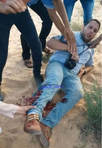
Journalist Zaki Awadallah video
Palestinian medical sources have confirmed that Israeli soldiers killed, Friday, a fourth Palestinian, in the Gaza Strip, after it killed three others earlier.
The Health Ministry stated that an Israeli army sharpshooter shot Mohammad Sharif Badwan, 27, with a live round in the chest, east of Gaza City.
Badwan is a member of the al-Qassam Brigades, the armed wing of Hamas; he was killed while unarmed and participating in the Great Return March procession, east of Gaza city, when the soldiers attacked the protesters with live fire, rubber-coated steel bullets, high-velocity gas bombs and concussion grenades.
Dr. Ashraf al-Qedra, spokesperson of the Health Ministry in Gaza, said the soldiers also injured 120 Palestinians, including 50 who were rushed to hospitals in the coastal region.
One of the wounded Palestinians in a journalist, identified as Zaki Awadallah, who was shot by the army east of Gaza city.
Also on Friday, the soldiers killed three Palestinian fighters, and injured many residents, after the army fired missiles into two sites run by the al-Qassam Brigades, the armed wing of Hamas, in Rafah and Khan Younis, in the southern parts of the Gaza Strip. video
The Al-Qassam Brigades issued a statement mourning Sha’ban Rajab Abu Khater, and Mohammad Riyad Abu Farhana, from Khan Younis, in addition to Mahmoud Khalil Qishta, from Rafah.
It said that the fighters were killed when the army fired missiles at observation posts in Rafah and Khan Younis, and vowed fierce retaliation to the serious Israel escalation.
Meanwhile, Israeli Defense Minister and former nightclub bouncer Avigdor Lieberman stated on Friday that he is directing the Israeli military to prepare for an all-out assault on the besieged Gaza Strip, which he said will be “broad” and “painful.”
Palestinian medical sources have confirmed that Israeli soldiers killed, Friday, a fourth Palestinian, in the Gaza Strip, after it killed three others earlier.
The Health Ministry stated that an Israeli army sharpshooter shot Mohammad Sharif Badwan, 27, with a live round in the chest, east of Gaza City.
Badwan is a member of the al-Qassam Brigades, the armed wing of Hamas; he was killed while unarmed and participating in the Great Return March procession, east of Gaza city, when the soldiers attacked the protesters with live fire, rubber-coated steel bullets, high-velocity gas bombs and concussion grenades.
Dr. Ashraf al-Qedra, spokesperson of the Health Ministry in Gaza, said the soldiers also injured 120 Palestinians, including 50 who were rushed to hospitals in the coastal region.
One of the wounded Palestinians in a journalist, identified as Zaki Awadallah, who was shot by the army east of Gaza city.
Also on Friday, the soldiers killed three Palestinian fighters, and injured many residents, after the army fired missiles into two sites run by the al-Qassam Brigades, the armed wing of Hamas, in Rafah and Khan Younis, in the southern parts of the Gaza Strip. video
The Al-Qassam Brigades issued a statement mourning Sha’ban Rajab Abu Khater, and Mohammad Riyad Abu Farhana, from Khan Younis, in addition to Mahmoud Khalil Qishta, from Rafah.
It said that the fighters were killed when the army fired missiles at observation posts in Rafah and Khan Younis, and vowed fierce retaliation to the serious Israel escalation.
Meanwhile, Israeli Defense Minister and former nightclub bouncer Avigdor Lieberman stated on Friday that he is directing the Israeli military to prepare for an all-out assault on the besieged Gaza Strip, which he said will be “broad” and “painful.”
Israeli soldiers killed, Friday, three Palestinian fighters, and injured many residents, after the army fired missiles into two sites run by the al-Qassam Brigades, the armed wing of Hamas, in Rafah and Khan Younis, in the southern parts of the Gaza Strip.
The Al-Qassam Brigades issued a statement mourning Sha’ban Rajab Abu Khater, and Mohammad Riyad Abu Farhana, from Khan Younis, in addition to Mahmoud Khalil Qishta, from Rafah.
It said that the fighters were killed when the army fired missiles at observation posts in Rafah and Khan Younis.
The Brigades vowed fierce retaliation to the serious Israeli escalation, and said the “Israeli crimes are foolish acts, will cause Israel to pay dearly.”
The bodies of the three Palestinians were severely mutilated by the Israeli missiles, and their remains were moved to the filed clinic, east of Khan Younis.
Following the attack, Palestinian fighters exchanged fire with Israeli soldiers along the border areas, while the army fired more live rounds, in addition to several shells into northern Gaza.
Furthermore, the soldiers shot a child, 14 years of age, with a live round in the head, east of Khan Younis, during the Great March Procession, and fired many live rounds at homes, east of Abasan, east of Khan Younis.
The soldiers also injured at least five Palestinians, and caused dozens to suffer the effects of teargas inhalation, along the eastern border areas, in the Gaza Strip.
On Thursday afternoon, the al-Qassam Brigades issued a statement saying that the Israeli missiles were fired at an observation post, east of Rafah, killing Abdul-Karim Ismael Radwan, 22, and wounding three others.
Meanwhile, Israeli Defense Minister Avigdor Lieberman said that Israel is planning an assault on Gaza, bigger than the Israeli war on the coastal region in 2014, in which 2100 Palestinians, including entire families, were killed, and thousands were injured.
Updated From: Three Palestinians Killed in Israeli Bombing Raid on Gaza – Jul 20, 2018 @ 19:25
Three Palestinians were killed and several injured, by Israeli forces, during the “Great March of Return” protests along the Israel-Gaza border, on Friday.
Two were killed after Israeli artillery shelling targeted a “monitoring point” in Khan Younis, in southern Gaza Strip, on Friday afternoon.
A third was killed in in eastern Rafah city during the protest, according to Maan News Agency.
According to local sources, hundreds of Gaza residents raced to the return camps along the eastern border of the Gaza Strip, to participate in a protest, where they demonstrated against UNWRA’s lack of assistance for refugees.
Sources added that protesters set car tires on fire, in attempt to blur the vision of Israeli snipers with smoke and flames, while they proceed with the march.
Israeli forces began firing at the protesters near the return camps located east of Khan Younis, in southern Gaza, and injured two Palestinians.
The identities of the two injured remain unknown.
The Al-Qassam Brigades issued a statement mourning Sha’ban Rajab Abu Khater, and Mohammad Riyad Abu Farhana, from Khan Younis, in addition to Mahmoud Khalil Qishta, from Rafah.
It said that the fighters were killed when the army fired missiles at observation posts in Rafah and Khan Younis.
The Brigades vowed fierce retaliation to the serious Israeli escalation, and said the “Israeli crimes are foolish acts, will cause Israel to pay dearly.”
The bodies of the three Palestinians were severely mutilated by the Israeli missiles, and their remains were moved to the filed clinic, east of Khan Younis.
Following the attack, Palestinian fighters exchanged fire with Israeli soldiers along the border areas, while the army fired more live rounds, in addition to several shells into northern Gaza.
Furthermore, the soldiers shot a child, 14 years of age, with a live round in the head, east of Khan Younis, during the Great March Procession, and fired many live rounds at homes, east of Abasan, east of Khan Younis.
The soldiers also injured at least five Palestinians, and caused dozens to suffer the effects of teargas inhalation, along the eastern border areas, in the Gaza Strip.
On Thursday afternoon, the al-Qassam Brigades issued a statement saying that the Israeli missiles were fired at an observation post, east of Rafah, killing Abdul-Karim Ismael Radwan, 22, and wounding three others.
Meanwhile, Israeli Defense Minister Avigdor Lieberman said that Israel is planning an assault on Gaza, bigger than the Israeli war on the coastal region in 2014, in which 2100 Palestinians, including entire families, were killed, and thousands were injured.
Updated From: Three Palestinians Killed in Israeli Bombing Raid on Gaza – Jul 20, 2018 @ 19:25
Three Palestinians were killed and several injured, by Israeli forces, during the “Great March of Return” protests along the Israel-Gaza border, on Friday.
Two were killed after Israeli artillery shelling targeted a “monitoring point” in Khan Younis, in southern Gaza Strip, on Friday afternoon.
A third was killed in in eastern Rafah city during the protest, according to Maan News Agency.
According to local sources, hundreds of Gaza residents raced to the return camps along the eastern border of the Gaza Strip, to participate in a protest, where they demonstrated against UNWRA’s lack of assistance for refugees.
Sources added that protesters set car tires on fire, in attempt to blur the vision of Israeli snipers with smoke and flames, while they proceed with the march.
Israeli forces began firing at the protesters near the return camps located east of Khan Younis, in southern Gaza, and injured two Palestinians.
The identities of the two injured remain unknown.
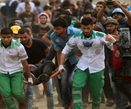
Israeli soldiers attacked, Friday, the Great Return March processions, along the eastern border areas of the besieged Gaza Strip, wounding at least five Palestinians, and causing dozens to suffer the effects of teargas inhalation.
Media sources in Gaza said the soldiers fired dozens of live rounds and high-velocity gas bombs at the protesters.
Medical sources at the Shifa Hospital, west of Gaza city, said the soldiers shot two young men with live rounds in their legs, east of the Zeitoun neighborhood, east of the city.
They added that the two Palestinians suffered moderate wounds, while dozens were treated for the effects of teargas inhalation.
The soldiers also attacked dozens of Palestinians east of Khuza’a town, east of the southern Gaza Strip city of Khan Younis, wounding two with live fire, and causing dozens to suffer the effects of teargas inhalation.
The Health Ministry in Gaza said the soldiers also shot a young man with live fire in Abu Safiyya area, east of Jabalia, in northern Gaza, before he was rushed to the Indonesian Hospital in nearby Beit Lahia, suffering moderate wounds.
It added that dozens of Palestinians suffered the effects of teargas inhalation east of the al-Boreij refugee camp, in central Gaza, and east of Rafah, in the southern part of the coastal region.
It is worth mentioning that many protesters burnt tires and flew balloons carrying the colors of the Palestinian flag.
Media sources in Gaza said the soldiers fired dozens of live rounds and high-velocity gas bombs at the protesters.
Medical sources at the Shifa Hospital, west of Gaza city, said the soldiers shot two young men with live rounds in their legs, east of the Zeitoun neighborhood, east of the city.
They added that the two Palestinians suffered moderate wounds, while dozens were treated for the effects of teargas inhalation.
The soldiers also attacked dozens of Palestinians east of Khuza’a town, east of the southern Gaza Strip city of Khan Younis, wounding two with live fire, and causing dozens to suffer the effects of teargas inhalation.
The Health Ministry in Gaza said the soldiers also shot a young man with live fire in Abu Safiyya area, east of Jabalia, in northern Gaza, before he was rushed to the Indonesian Hospital in nearby Beit Lahia, suffering moderate wounds.
It added that dozens of Palestinians suffered the effects of teargas inhalation east of the al-Boreij refugee camp, in central Gaza, and east of Rafah, in the southern part of the coastal region.
It is worth mentioning that many protesters burnt tires and flew balloons carrying the colors of the Palestinian flag.
19 july 2018

Israeli military bulldozers afternoon Thursday moved dozens of meters into the eastern corners of the Awda (return) Camp, to the south of the blockaded Gaza Strip.
Israeli patrols moved 50 meters into eastern al-Awda Camp, east of Rafah, and set up barbed wire near the border fence.
Israeli military incursions near the border fence separating Gaza from territories occupied in 1948 have long been a near-daily occurrence.
The Israeli army also regularly detains and opens fire on unarmed Palestinian fishermen, shepherds, and farmers along the border areas.
The practice, often carried out under the security pretext, has destroyed much of the agricultural harvest of the blockaded coastal enclave.
Israeli patrols moved 50 meters into eastern al-Awda Camp, east of Rafah, and set up barbed wire near the border fence.
Israeli military incursions near the border fence separating Gaza from territories occupied in 1948 have long been a near-daily occurrence.
The Israeli army also regularly detains and opens fire on unarmed Palestinian fishermen, shepherds, and farmers along the border areas.
The practice, often carried out under the security pretext, has destroyed much of the agricultural harvest of the blockaded coastal enclave.

The Al-Qassam Brigades, the armed wing of Hamas movement, issued a statement, Thursday, vowing retaliation for the death of one of its members, east of Rafah, in the southern part of the Gaza Strip.
Al-Qassam issued a statement saying that the Israeli missiles were fired at an observation post, east of Rafah, killing Abdul-Karim Ismael Radwan, 22, and wounding three others.
He was a member of the “Filed Observation Unit,” in the Gaza Strip, tasked with monitoring the border fence, and the Israeli invasions into the coastal region.
It denounced the assassination, and held Israel fully accountable for what it called “the cold-blooded crime, and foolish Israeli act that has serious consequences.”
“Israel will pay dearly for this crime,” Al-Qassam said in its statement, “Our exacted revenge will fit the crime.”
It is worth mentioning that Abdul-Karim’s brother, Ahmad Radwan, was killed by Israeli soldiers during a military offensive and invasion into Rafah, in 2002.
Al-Qassam issued a statement saying that the Israeli missiles were fired at an observation post, east of Rafah, killing Abdul-Karim Ismael Radwan, 22, and wounding three others.
He was a member of the “Filed Observation Unit,” in the Gaza Strip, tasked with monitoring the border fence, and the Israeli invasions into the coastal region.
It denounced the assassination, and held Israel fully accountable for what it called “the cold-blooded crime, and foolish Israeli act that has serious consequences.”
“Israel will pay dearly for this crime,” Al-Qassam said in its statement, “Our exacted revenge will fit the crime.”
It is worth mentioning that Abdul-Karim’s brother, Ahmad Radwan, was killed by Israeli soldiers during a military offensive and invasion into Rafah, in 2002.
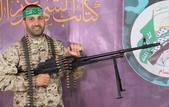
Abdul Karim Redwan, 30
A Palestinian young man was pronounced dead and three others injured afternoon Thursday after the Israeli occupation army struck eastern Rafah, south of the blockaded Gaza Strip.
An Israeli drone dropped two missiles targeting a group of Palestinians gathering east of Rafah city, injuring four Palestinians, including one critically. The latter was rushed to the European Hospital in Gaza, where he was pronounced dead shortly afterwards.
The Health Ministry spokesman Ashraf al-Qidrah said medics did their best to rescue the injured youth. However, he succumbed to his wounds shortly.
A PIC news correspondent identified the casualty as Abdul Karim Redwan, aged 30.
The Israeli military spokesman claimed the raid came in response to incendiary balloons flown from Gaza.
A Palestinian young man was pronounced dead and three others injured afternoon Thursday after the Israeli occupation army struck eastern Rafah, south of the blockaded Gaza Strip.
An Israeli drone dropped two missiles targeting a group of Palestinians gathering east of Rafah city, injuring four Palestinians, including one critically. The latter was rushed to the European Hospital in Gaza, where he was pronounced dead shortly afterwards.
The Health Ministry spokesman Ashraf al-Qidrah said medics did their best to rescue the injured youth. However, he succumbed to his wounds shortly.
A PIC news correspondent identified the casualty as Abdul Karim Redwan, aged 30.
The Israeli military spokesman claimed the raid came in response to incendiary balloons flown from Gaza.
18 july 2018
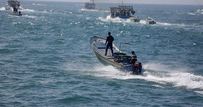
Israeli gunboats on Wednesday morning attacked Palestinian fishermen and their boats off the coast of the besieged Gaza Strip.
According to local sources, gunboats opened machinegun fire at and chased fishing boats off the shores of as-Sudaniya and al-Waha areas, northwest of Gaza.
The Israeli navy attacked the fishermen as they were working within the permitted fishing zone, which Israel had reduced recently from six to three nautical miles.
Other fishing boats were also exposed to a similar attack by the Israeli navy off the shore of central Gaza.
Israeli gunboats are around Gaza fishermen almost every day, harassing them, shooting at them, damaging their boats, and making arrests. Sometimes fishermen are injured or killed during gunfire attacks.
Under the 1993 Oslo accords, Palestinian fishermen are permitted to fish up to 20 nautical miles off the coast of Gaza, but since then Israel has kept reducing the fishing area gradually to a limit of three nautical miles as part of its blockade on Gaza.
Fishermen and human rights groups also say that, since the 2008-09 war in Gaza, the Israeli army has been regularly enforcing a limit even closer to the shore.
According to local sources, gunboats opened machinegun fire at and chased fishing boats off the shores of as-Sudaniya and al-Waha areas, northwest of Gaza.
The Israeli navy attacked the fishermen as they were working within the permitted fishing zone, which Israel had reduced recently from six to three nautical miles.
Other fishing boats were also exposed to a similar attack by the Israeli navy off the shore of central Gaza.
Israeli gunboats are around Gaza fishermen almost every day, harassing them, shooting at them, damaging their boats, and making arrests. Sometimes fishermen are injured or killed during gunfire attacks.
Under the 1993 Oslo accords, Palestinian fishermen are permitted to fish up to 20 nautical miles off the coast of Gaza, but since then Israel has kept reducing the fishing area gradually to a limit of three nautical miles as part of its blockade on Gaza.
Fishermen and human rights groups also say that, since the 2008-09 war in Gaza, the Israeli army has been regularly enforcing a limit even closer to the shore.
Page: 22 - 21 - 20 - 19 - 18 - 17 - 16 - 15 - 14 - 13 - 12 - 11 - 10 - 9 - 8 - 7 - 6 - 5 - 4 - 3 - 2
Truce violations List of names Pictures of martyrs
Days: Aug: 26 - 25 - 24 - 23 - 22 - 21 - 20 - 19 - 18 - 17 - 16 - 15 - 14 - 13 - 12 - 11 - 10 - 9 - 8 - 7 - 6 - 5 - 4 - 3 - 2 - 1
July: 31 - 30 - 29 - 28 - 27 - 26 - 25 - 24 - 23 - 22 - 21 - 20 - 19 - 18 - 17 - 16 - 15 - 14 - 13 - 12 - 11 - 10 - 9 - 8

